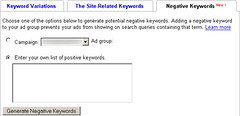Using a Blog to Drive Traffic to your Ebay Store
eBay has over 233 million users in their online marketplace community. eBay provides a safe trading marketplace for us, but eBay is also very competitve. There are ways to use the internet to drive more traffic to your store.
Blogs are a great, free, fun, marketing tool. Blogging began as a way for individuals to write public daily journals, or have an on-line diary for the world to see. Eventually, blogs started showing up in searches on search engines, so the marketing sector jumped on the benefits of blogging. There are many free sites where you can start your own blog. If you have knowledge in a certain area, start a blog and talk about it. Your blog doesn’t have to be about your eBay store, but it helps drive traffic there if that is your goal.
The purpose of a blog is to create a place on the internet to promote your website and drive traffic to it, to communicate with your customers and target audience, as well as to network with others in your field. Post intelligent, useful information about your topic and then put a plug in about your business. Give away tidbits of information for free, and then can post a link to your site, blog, or specific products that you sell. Encourage interest in the products you sell in your eBay store and provide a link.
Your blog posts will come up on search engines. You can go on the internet and use material that others post – I often use quotes from Entrepreneur Magazine and Business Week. Just be sure to give credit to the author and publication if you use an excerpt form someone else’s work.
You can also use a blog as a mini-website and add your affiliate links, Google Adsense, and other advertising to create a passive stream of income. It is important that you write on it regularly, at least 3 times a week, to keep it updated and keep fresh info going to the search engines. You should also seek out other blogs that are in your same industry or niche, and and leave comments, and leave your website or blog address, it is imbedded in their code and you are spreading yourself around the internet – FREE advertising. When leaving comments, be sure to read the post and leave an insightful comment, not just comments like “Good article.”
I can’t tell you how much a blog really works – I have received paid consulting jobs and made other fantastic business connections just because the right person visited my blog and liked what they read, or because I visited theirs and left a comment and they in turn, checked me out. Also, if others in your field find you and like your blog and your info, you can trade links and boom – more free advertising.
If you find a blog you like, offer to write a guest post for them, more free advertising. Just make sure you are offering quality, intelligent information and then add a link to your site or your blog at the end, in your signature. Your “give” is the article, your “take” is where you leave your links in your signature.
I make it a habit, part of my weekly routine, to comment on other people’s blogs a few times a week. I even keep a spreadsheet of the “good” ones, those with lots of other comments, and visit those regularly. Then, the other commenters will see you, and there is more traffic to back you – and the opportunity to make more great business connections.
Every eBay seller should have a blog dedicated to their eBay business. I have 3 blogs for 3 different target audiences: For my eBay consulting business (target audience, eBay sellers), a pet blog (I have affiliate programs where I earn money on selling pet items), and a business blog for work at home moms.
Suzanne Wells is an eBay Power Seller, eBay Consultant, freelance writer, and work at home mom of two. Visit her eBay blog, and join her free eBay discussion forum.
Article from articlesbase.com







